Hafa adai
This time, I’d like to introduce a scenic spot you should stop by during a drive around the island. Located in an area called Anigua, just past the center of Hagåtña, is a place known as Adelup. In Guam, when people mention “Adelup,” it generally refers to the office of the Governor of Guam and various government agencies, which are housed in the Guam Government Offices. In this article, I’m going to introduce a breathtaking photography spot located right within the grounds of the Guam Government Offices. This area offers many attractions that reflect Guam’s history and culture.
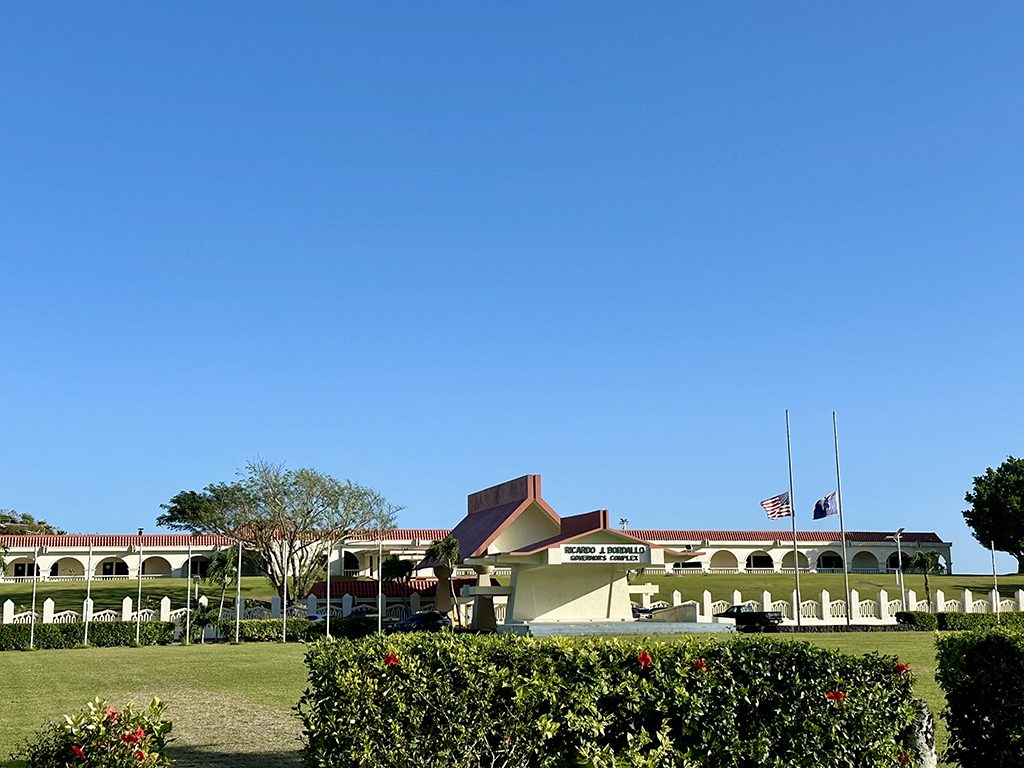
As you head south past the center of Hagåtña, you’ll soon see a large grassy field with a building behind it on your right—that’s the Guam Government Offices. Turn right at the traffic signal to enter the premises, where you’ll follow a one-way loop going counterclockwise. Continue going right.
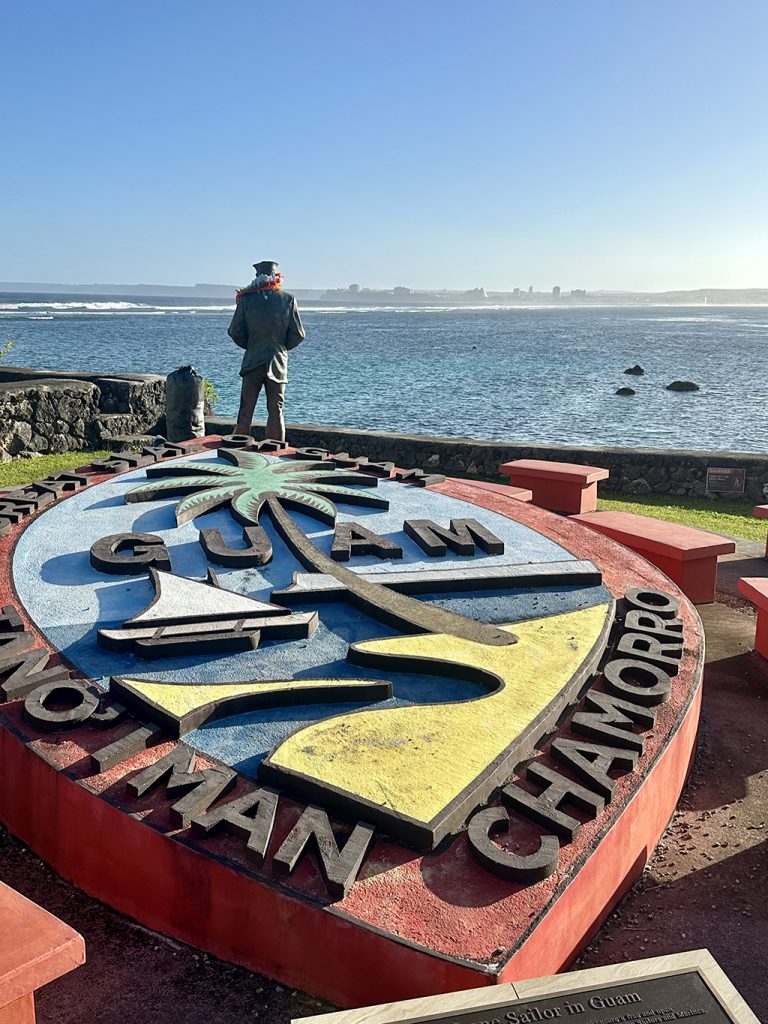
After going a little further, you’ll arrive at the first photography spot: the Guam Seal and a statue of an American Navy sailor. These two monuments were erected in 2018 to honor both the prosperity of modern-day Guam and the American Navy’s efforts in rescuing evacuees from Vietnam in 1975.
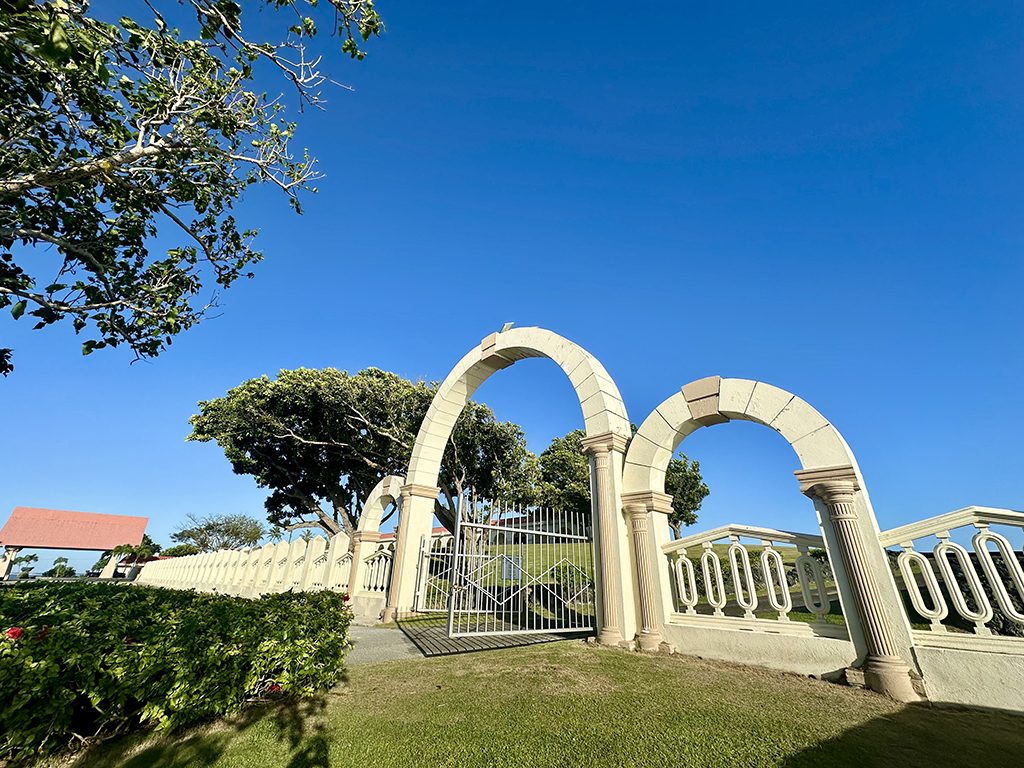
Next, continue straight and ascend a hill. Before you reach the slope, you’ll see a gate—another piece of history in Guam. Guam was under Spanish rule for over 300 years, starting in the 16th century, and the arch-style gate is believed to reflect the influence of Spanish architecture. You can find similar gates in places like the Spanish Plaza in Hagåtña. It may seem like just a regular gate if you pass by it without a second thought, but this one holds historical significance for Guam.
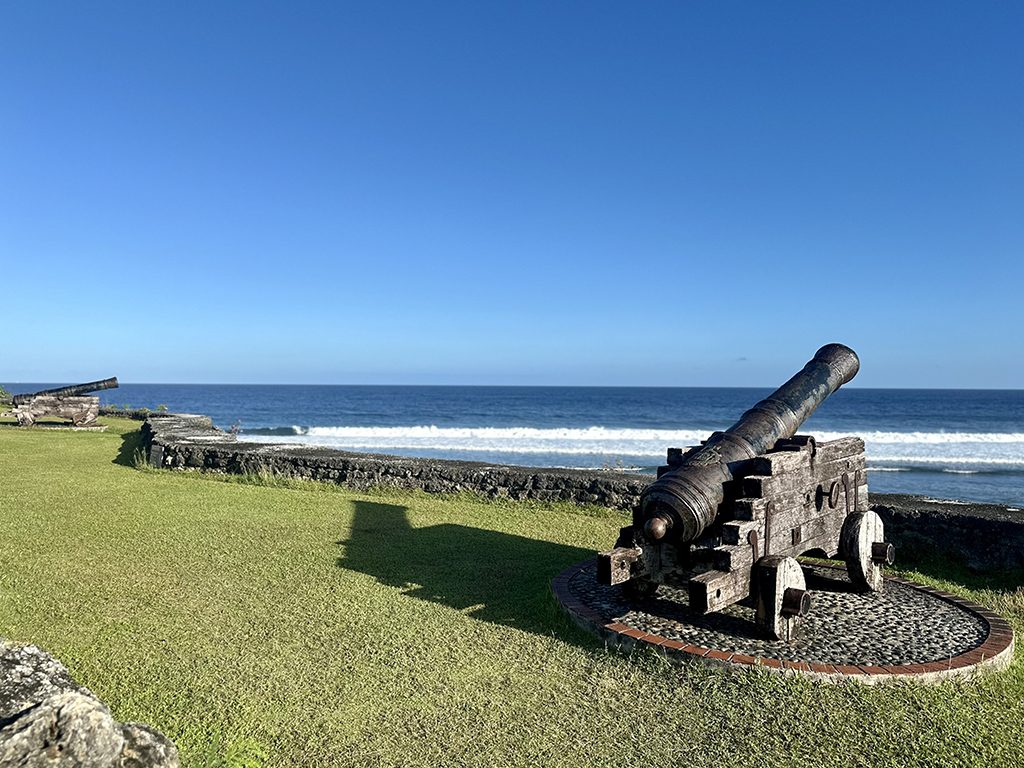
As you climb the hill, you’ll be treated to a stunning view of the ocean on your right. There, you’ll find two cannons. These cannons date back to the Spanish colonial period and stand facing the sea with quiet yet imposing strength, evoking the long history of Guam.
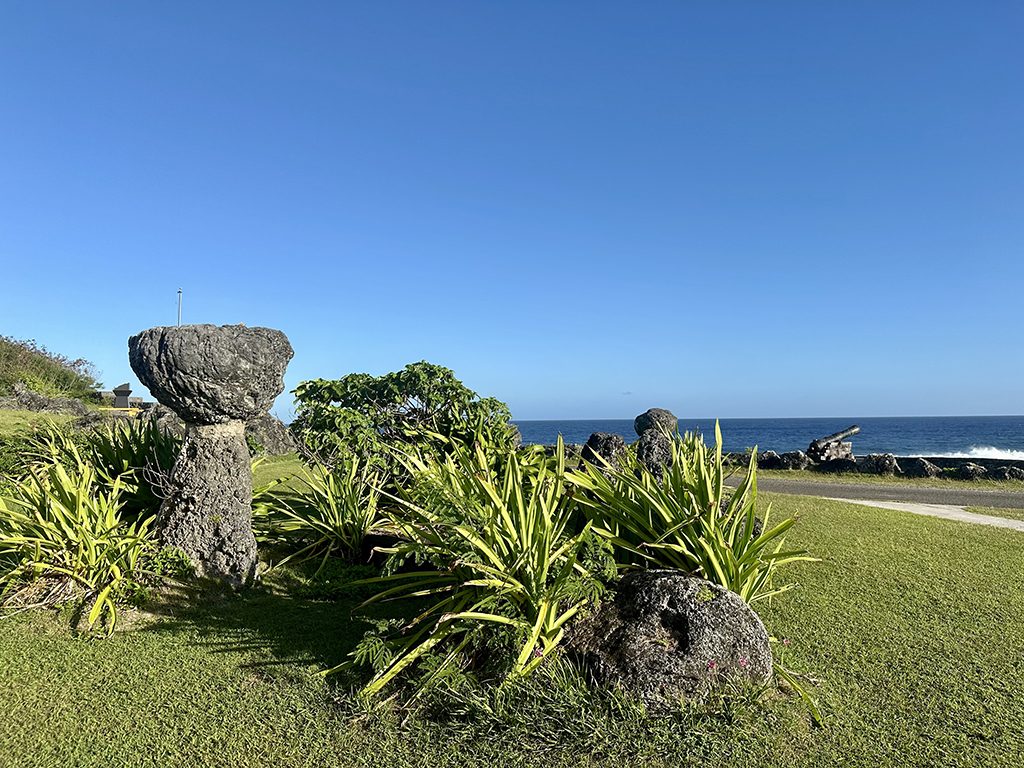
Nearby is a Latte Stone. While it’s a replica, it represents an ancient Chamorro cultural artifact. The Latte Stone, consisting of the pillar (Haligi) and the semi-spherical base (Tasa), is believed to have been the foundation for elevated dwellings. However, there are other theories about its use, and its exact historical significance remains one of the unresolved mysteries of Guam.
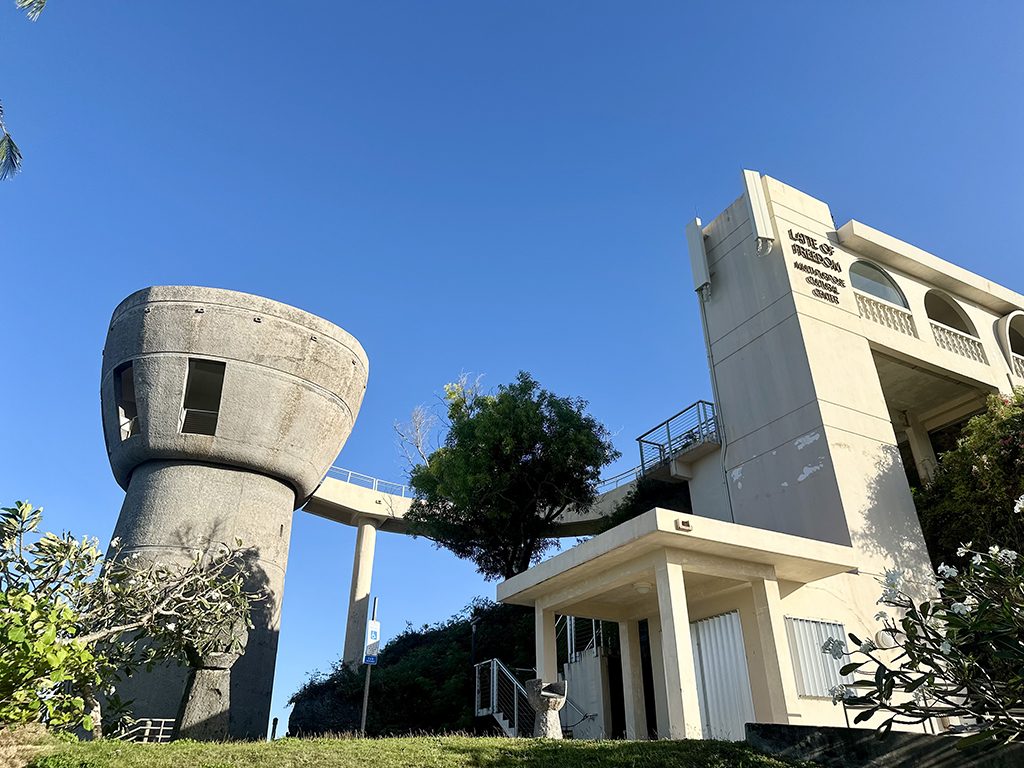
The final photography spot is the massive Latte Stone, visible from the Marine Corps Drive. This structure, called the “Latte of Freedom,” was completed in 2010 and stands about 15 meters tall. It was previously open as an observation deck, but now it can only be admired from below. Its majestic, towering figure against the blue sky makes it a stunning sight worth capturing on camera.
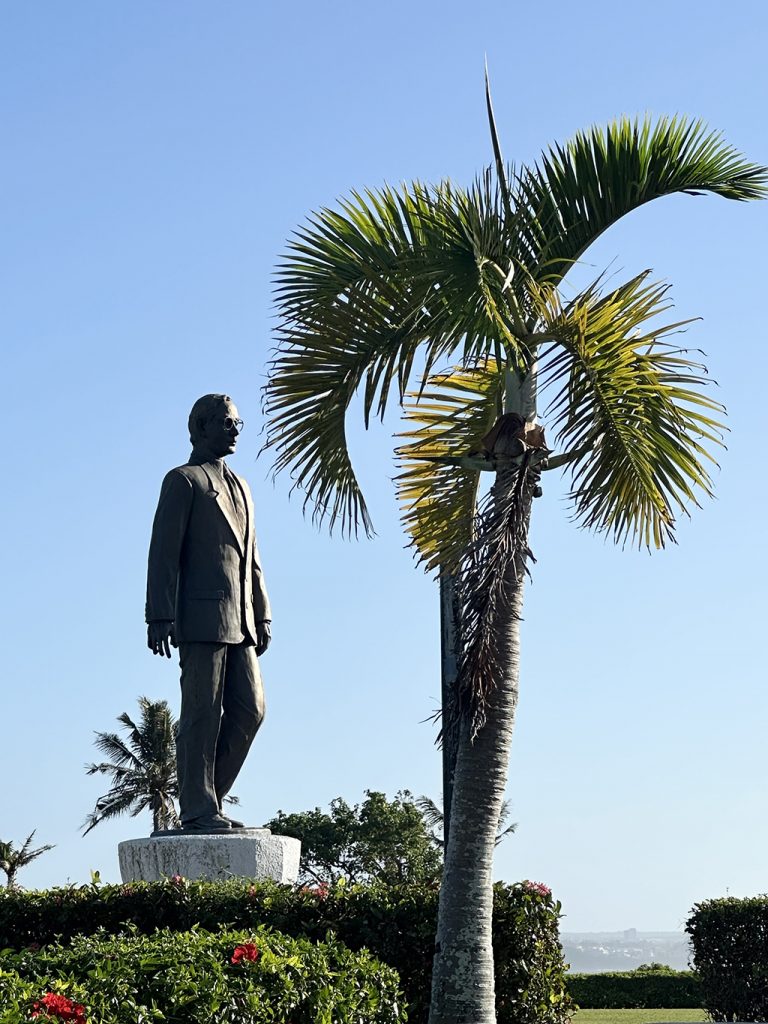
Incidentally, the grounds of the Guam Government Offices feature many statues. The one at the main entrance is a statue of Ricardo J. Bordallo, who served as Governor of Guam for six years and was the creator of the Latte of Freedom. In honor of his contributions, the statue was erected, and the area was officially named the “Ricardo J. Bordallo Governor’s Complex.” When searching on Google Maps, you can find it under the name “Ricardo J. Bordallo Governor’s Complex.”
Although the Guam Government Offices aren’t typically a popular tourist destination, it’s a highly recommended spot for photography and to learn about Guam’s history. The gate I mentioned earlier is open from Monday to Friday, from 8 AM to 5 PM.